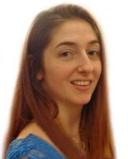Dreaming
Can Virtual Reality Enhance Lucid Dream Training?
New study examines whether VR practice increases lucid dream frequency.
Posted February 17, 2021 Reviewed by Gary Drevitch
Lucid dreaming — in which you are aware of being in a dream as it is occurring — is similar to the experience of Virtual Reality (VR) in that you are fully immersed in a vivid multisensory environment, and aware that what is occurring is not the ‘real world.'
Classic lucid dream induction techniques often involve questioning waking reality. The ‘reality check’ method requires you to critically question whether you are in a dream multiple times throughout the day, particularly whenever experiencing an unusual or surreal situation. This trains you to question reality whenever something dream-like happens, and presumably this habit spills into your actual dreaming life, where, upon critical reflection you realize, “Hey! This is a dream!”
A caveat of the technique is that waking life is often not so ‘dream-like.’ Because of this, the authors of a recent study wondered whether using VR to provide ‘dream-like’ experiences in waking life could enhance the reality check technique. Being immersed in VR, a participant can genuinely question whether what they are experiencing is ‘real’ and can better practice this technique of becoming lucid.
To test whether VR could enhance lucid dream training, an experiment was conducted comparing three groups of participants.
In one group, 13 participants followed a lucid dream training that involved critically asking themselves ‘Am I dreaming?’ 5-10 times per day, especially in situations that felt bizarre or dreamlike. This training occurred over the course of four consecutive weeks.
In a second group (the VR group), 13 participants followed lucid dream training in addition to undergoing 12 sessions of VR training (3 sessions per week, 45 min each) over the four-week study period. Participants played a range of games that were selected to be dream-like, i.e. they were immersive and often involved dream-like elements. The experimenters also created a custom VR game called the ‘Spinoza Café’ which was specifically designed to mimic dream phenomena – the café scene becomes progressively bizarre and creative dream elements included clocks running backward, customers suddenly changing into mannequins, gravity falling, etc. The VR participants were also reminded to do reality checks during the VR games.
There was also a control group of 13 participants who did not undergo any lucid dream or VR training during the four weeks of the experiment.
All 39 participants kept a daily dream diary in which they reported their dream and rated the lucidity in their dream using a questionnaire. In addition, participants were recorded with a portable polysomnography (PSG) system at home for one night at the beginning and four nights at the end of the study period. This allowed the experimenters to assess whether any participants had lucid dreams during REM sleep at home, with the instruction to objectively signal their lucid dream by looking left-right-left-right two times quickly while in the lucid dream. This eye signal is recorded by PSG and is a standard method for objectively verifying lucid dreams.
Analyses revealed that only the VR-enhanced lucid dream training group had significantly more lucid dreams and higher subjective ratings of lucidity than the control group.
Remarkably, 12 participants experienced lucid dreams during the nights wearing polysomnography at the end of the study – eight from the VR group and four from the traditional lucid dream training group. Six participants attempted to give the eye signal while being recorded by polysomnography – and three cases were objectively verified by raters who examined the sleep recordings.
Overall, the VR training led to increased lucidity compared to a control group, and twice as many participants in the VR group reported full-blown lucid dreams compared to those in the traditional lucid dream training group. The addition of portable polysomnography marks this as a novel and feasible method for prospectively inducing and recording objective lucid dreams in participants at-home.
References
Gott, J., Bovy, L., Peters, E., Tzioridou, S., Meo, S., Demirel, Ç., ... & Dresler, M. (2021). Virtual reality training of lucid dreaming. Philosophical Transactions of the Royal Society B, 376(1817), 20190697.


